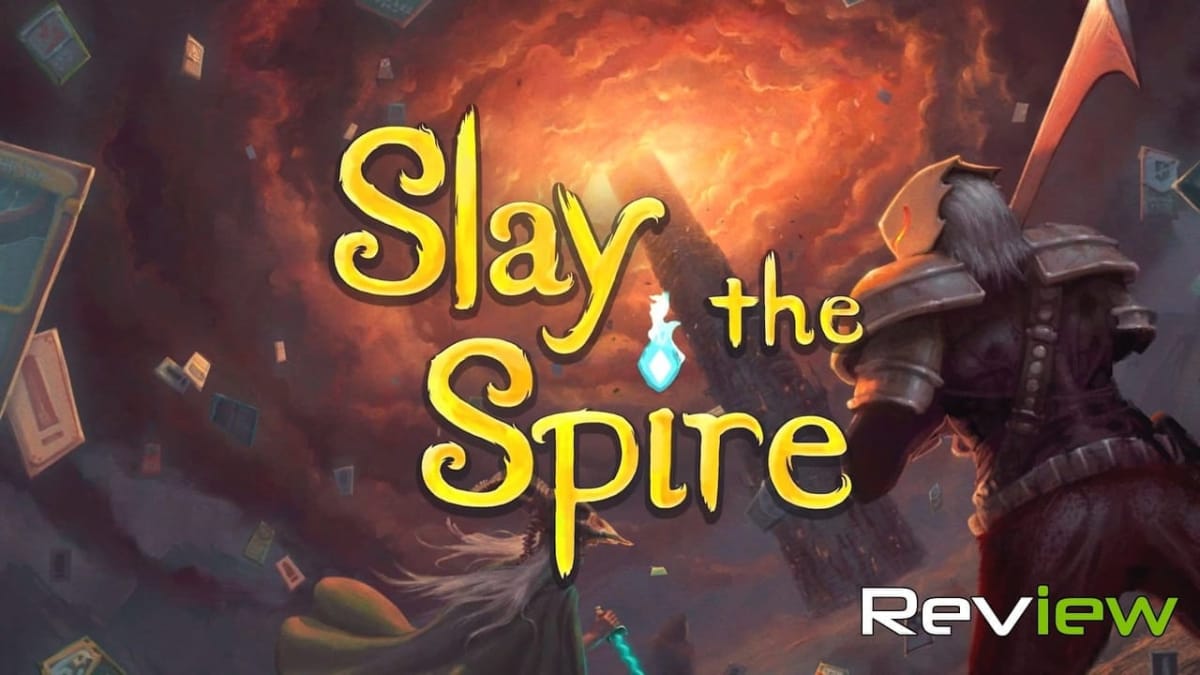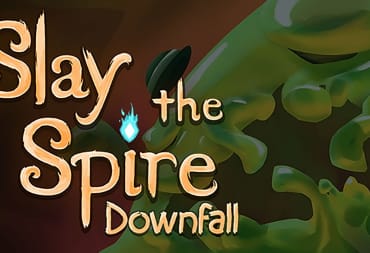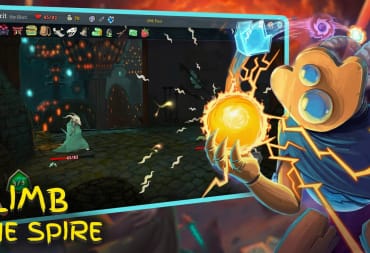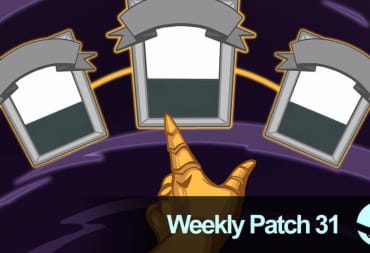Card games tend to suffer from poor to awful AI in single-player. No matter how good a computer’s poker face, it simply lacks a sense of long-term strategy. Equal parts roguelike and deckbuilder, Slay the Spire manages to surmount this problem with an elegant solution. While you play cards, the AI deploys a menagerie of monsters and fiends to assault you with a variety of attacks, buffs, and debuffs. You have to slay them all as you climb the Spire, a hellish tower set in a unique fantasy universe.
Since its premiere in Early Access on Steam back in November 2017, Slay the Spire has always had a steady “Overwhelmingly Positive” reception. Dozens of updates and balancing patches continued to consolidate this reception. Our preview back in April 2018 was also equally positive. The final release version might have some surprises up its sleeve. Depending on what’s new, we might update our coverage with a new look.
For those unaware, in a deckbuilder card game, you can only build your deck as you play it. There’s no prelude that allows you to prepare in advance. You can only prepare in a broad sense by knowing what awaits you in the Spire. Experience is your only preparation, and understanding your enemies is more valuable than the rarity of your cards. You should also know how your class of choice operates, and how you can use their unique powers. Every run is fraught with unpredictable elements and potentially backfiring advantages. This is the litmus test of a great roguelike.
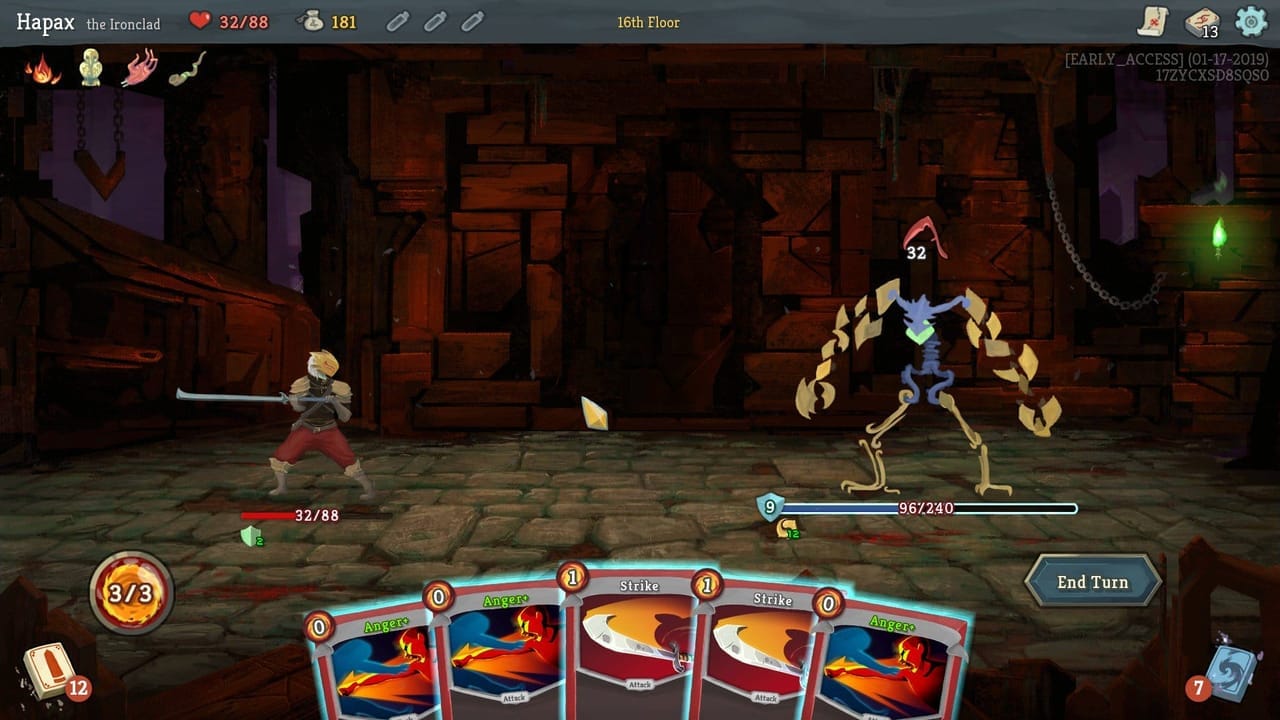
There are currently three classes available to slay your way up the Spire. The base design of each class has the same mechanics, but each takes a different approach based on their unique cards. This not only adds variety to the gameplay, but it’s also an extra layer of challenge as you figure out the optimal strategies for each character.
The Ironclad is a master swordsman who sold his soul to harness demonic energies. He’s probably the most aggro of the characters. You can build the Ironclad as a tank right from the first runs, but even a tank build can be aggro. With a card such as Body Slam, you can use armor as a weapon, pounding into enemies. Other more advanced builds focus on high strength attacks, potentially annihilating your enemies before they can even touch you. There’s also the Exhaust archetype, where you can remove cards, using them as fuel for an attack.
The Silent is a dagger-wielding lethal lady, and her exclusive power is poison. Once you manage to infect enemies with a touch of venomous green goo, you can multiply it every turn. Then you can take a defensive stance and let them wither away as the poison eats them up from the inside. A Discard build can be particularly useful when some enemies flood your deck with useless or damage-inducing cards. The Silent is not conducive to tank builds at all; she’s more of a stealth huntress, and preserving her energy is a must in all builds.
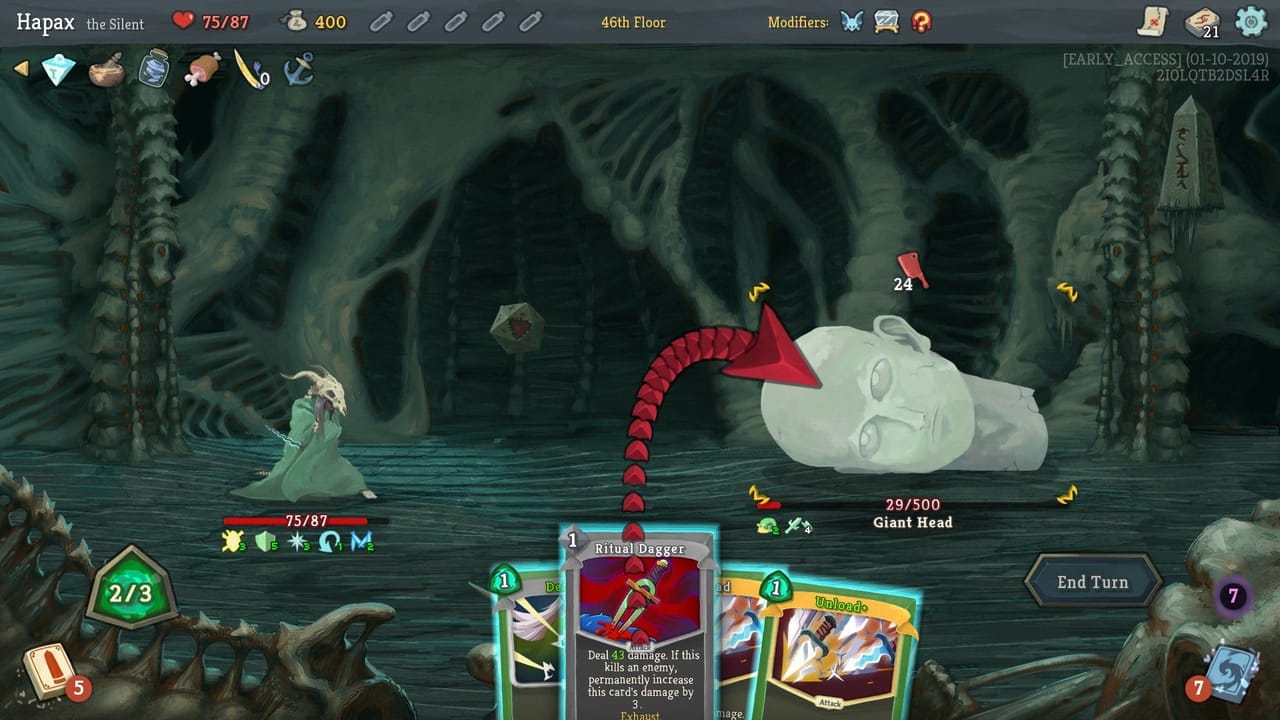
Finally, the Defect is an automaton gone rogue, derived from one of the many monstrous denizens of the Spire. The Orbs are the Defect’s unique mechanic. They float above it, providing passive effects, but also active bursts when “Evoked.” The Orbs can channel four types of energy: Lightning, Frost, Dark, and Plasma. Lightning and Dark cause passive and active damage on enemies; Frost provides the Defect with defense, and Plasma provides extra energy to play more cards. The Defect is probably the most versatile of the player characters, with many possibilities for different builds of all types.
Apart from cards, you will also require relics, which you collect along the way, providing passive bonuses. Without these relics, it’s even more difficult to make it to the end, as they energize your cards in ways that are sometimes unpredictable and highly satisfying. This is where the beauty of Slay the Spire starts to show, as a card game where synergies emerge in ways that you don’t always expect. There’s so much to experiment with as you begin to unlock new and more advanced relics and cards.
The real challenge in slaying the Spire is not so much in the thick of combat, but in the arduous and meticulous deckbuilding that pervades the climb. You have to make the most of what you find along the way, rather than go in planning to build a so-and-so deck. The Spire doesn’t give you the tools you want; it gives you tools that you can use if you’re smart enough to match them in unique ways. There are so many hard choices to make along the way, and the temptation to add new cards to your deck is always there. You will often regret your decisions as you learn about the game's explosive combinatorial chemistry.
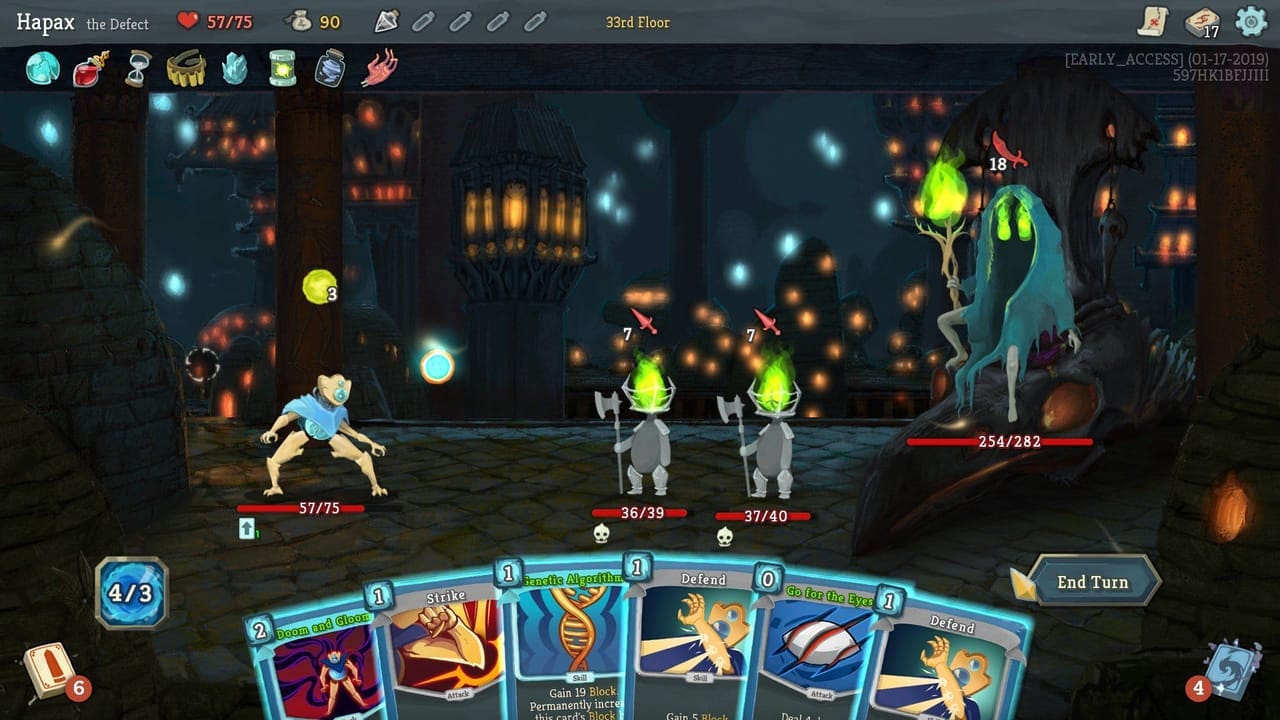
Battles can be highly challenging early on before you've had the chance to study each monstrous creature and learn their attack patterns. From the lowliest worms to the most horrendous bosses, your real enemy becomes the randomness of it all. “RNG” is your true nemesis, more than any of the Spire’s dwellers. Sometimes it won’t matter how prepared you feel, how carefully you plan each round based on painful experience. A random hand will throw it all off the rails, and you will die. You’ll lose that unique combination of relics and cards that you managed to forge, and you’ll have to start all over again. The game wouldn’t be the same without it, but you will feel unjustly punished by the RNG many times.
That’s where the originality of the fantasy setting comes in. Before each run, you meet the alien-ish whale-like behemoth called Neow. It gives you some choices based on your last run, but even an advantage can become a thorn on your side later on. Neow seems to represent the randomness of the Spire, where there is no good or evil. Everything is interchangeable and mutable. Some monsters are often sleeping when you approach and attack them, so they defend themselves. As such, you are not a hero, you are a damned soul in this Sisyphean limbo, condemned to slay monsters as you become one yourself.
The random events that punctuate the climb also pepper the narrative with comical lore. The choices you get are hardly black-and-white. You’ll encounter trickster entities, who taunt and lure you into accepting their boons on your way to the apex. Sometimes you can pluck relics from their rightful place, but you might have to endure the consequences of these purloined artifacts. In a way that’s as sparse as it is dense, the world of the Spire feels alive. It’s definitely not a generic fantasy backdrop. It’s a textured universe, no matter how stuck it remains in its relentless loop.
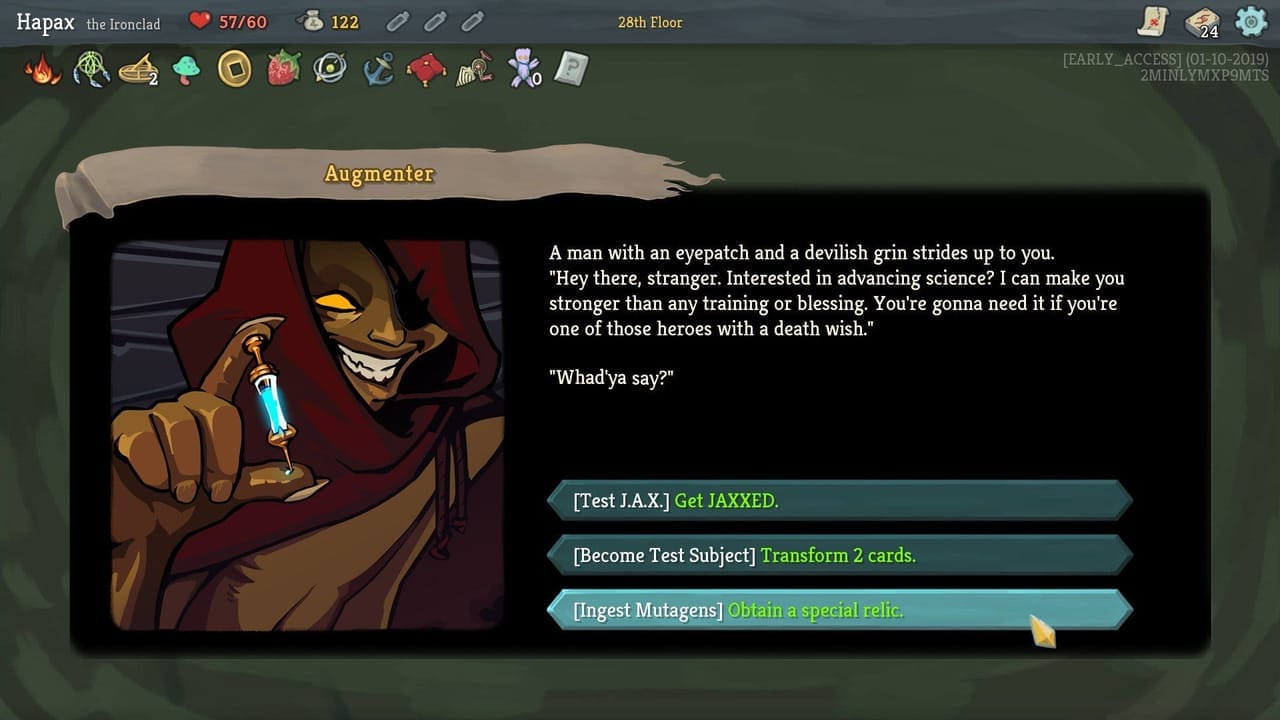
Even if it takes you hundreds of hours to finally achieve a paltry victory, Slay the Spire is worth every penny and every minute. It punishes you in equal measure as it rewards you with a sense of accomplishment. It may be an ephemeral accomplishment, vanishing in the ether of your losses, but an accomplishment still. The longer you play, the more you'll admire the symmetry of its design, its fearful synergies emerging from your own creative energy. As you build deck upon deck, you create a purpose where once there was only randomness. This is why we play games, so that we can defy the pointless randomness of it all.
Slay the Spire is the debut title of Mega Crit, a duo of developers based in Seattle. It would be an understatement to call it a success. Equally loved by card gamers and roguelike aficionados, I can see it having an extremely long shelf life in its final release. It’s always great to see a release out of Early Access, like a rite of passage. Some of these games still get updates and extra content. I doubt it will be any different for Slay the Spire, especially now that modding is possible. Even if you’re not big on roguelikes or card games, you might appreciate its endless cycle of death and triumph.
TechRaptor reviewed Slay the Spire on PC via Steam with a code provided by the developers.
Review Summary
Slay the Spire is a vertiginously challenging and infinitely replayable roguelike deckbuilder set in a highly original dark fantasy universe.
(Review Policy)Pros
- Fascinating Fantasy Universe
- Compelling Deckbuilding Mechanics
- Frenzied Roguelike Gameplay
- Rewards Attentive Experience
- Infinite Replay Value
Cons
- RNG Will Often Bring You Down
Have a tip, or want to point out something we missed? Leave a Comment or e-mail us at tips@techraptor.net
